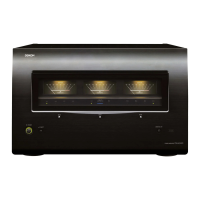Troubleshooti
n9
I
Ll/
R1:
150 W
(8
O/ohms, 20 Hz -
20
kHz
with
0.05 % T.H.D.)
300
W
(4
O/ohms. 1 kHz
with
0.7 % T.H.D.1
L2/
R2:
150 W
(8
O/ohms,
20
Hz -
20
kHz
with
0.05 % T.H.D.)
300
W
(4
O/ohms, 1 kHz
with
0.7 % T.H.D.)
L3/
R3:
150 W (8 O/ohms,
20
Hz -
20
kHz
with
0.05 % T.H.D.)
300
W
(4
O/ohms, 1 kHz
with
0.7 % T.H.D.)
L4/
R4:
150 W (8 O/ohms, 20 Hz -
20
kHz
with
0.05 % T.H.D.)
300
W (4 O/ohms, 1 kHz
with
0.7 % T.H.D.)
L5/
R5:
150 W (8 O/ohms,
20
Hz -
20
kHz
with
0.05 % T.H.D.)
300
W (4 O/ohms, 1 kHz
with
0.7 % T.H.D.)
L1
+ L2:
300
W (8 O/ohms, 20 Hz -
20
kHz
with
0.05 % T.H.D.)
500
W (4 O/ohms, 1 kHz
with
0.7 % T.H.D.)
L3 + L4:
300
W (8 O/ohms,
20
Hz -
20
kHz
with
0.05 % T.H.D.)
500
W (4 O/ohms, 1 kHz
with
0.7 % T.H.D.)
L5
+
R5:
300 W
(8
O/ohms, 20 Hz -
20
kHz
with
0.05 % T.H.D.)
500
W (4 O/ohms, 1 kHz
with
0.7 % T.H.D.)
R1
+
R2:
300 W (8 O/ohms, 20 Hz -
20
kHz
with
0.05 % T.H.D.)
500
W (4 O/ohms, 1 kHz
with
0.7 % T.H.D.1
R3
+
R4:
300 W (8 O/ohms,
20
Hz -
20
kHz
with
0.05 % T.H.D.)
500
W
(4
O/ohms, 1 kHz
with
0.7 % T.H.D.)
10 Hz - 100 kHz (8 O/ohms, +1,
-3
dB (at 1
W))
A or B 4 -
16
O/ohms
A + B 8 - 16 O/ohms
Bi-wiring 4 - 16 O/ohms
AC
120V,
60
Hz
12A
0.3 W (Standby)
434
(W) x 281 (H) x 530
(D)
mm
(17-3/32" x 11-1/16" x
20-55/64")
60
kg (132 Ibs 4oz1
Specifications
• Frequency response:
• Speaker output connectors:
Maximum
external dimansions:
Weight:
Bridge connections:
oPower amplifier section
• Rated output:
Normal connections:
oGeneral
Power supply:
Power consumption:
5
5
5
12
9 -11
5,9-
11
• Check that the power plugs
are
securely inserted into the POA-
A
1HDCl's
AC
inlets and the wall
power outlet.
• Check the connections.
• Turn off the power, wait for the
set to fully cool down, then turn
the power back on.
• Place the set
in
a well-ventilated
place.
• First unplug the power cord,
then
twist
the core wires tightly
or terminate the speaker cables,
then reconnect.
• Turn off the power and contact a
DENON service center.
• Use speakers with the specified
impedance.
• Connection of the power cord is
faulty.
• Connection with the input
devices or connection of the
speaker cables
is
faulty.
• Protection circuit activated due
to
rise of internal temperature.
• Core wires of
two
speakers are
touching each other or a core
wire
is
sticking out of the terminal
and touching the set's
rear
panel,
activating the protection circuit.
• Speakers with
an
impedance
other than specified
are
being
used.
• Set
is
damaged.
Power does not
turn
on',
or turns
off directly after it
was turned on.
No
sound is
produced from
speakers.
Power turns off
suddenly and
power indicator
flashes red.
If
a problem should arise, first check
the
following:
1.
Are
the
connections correct?
2.
Is
the
set being operated as described in the owner's manual?
3. Are
the
other components operating properly?
If this unit does not operate properly, check the items listed
in
the table below. Should the problem persist,
there may be a malfunction.
In
this case, disconnect the power immediately and contact your store of purchase.
14

